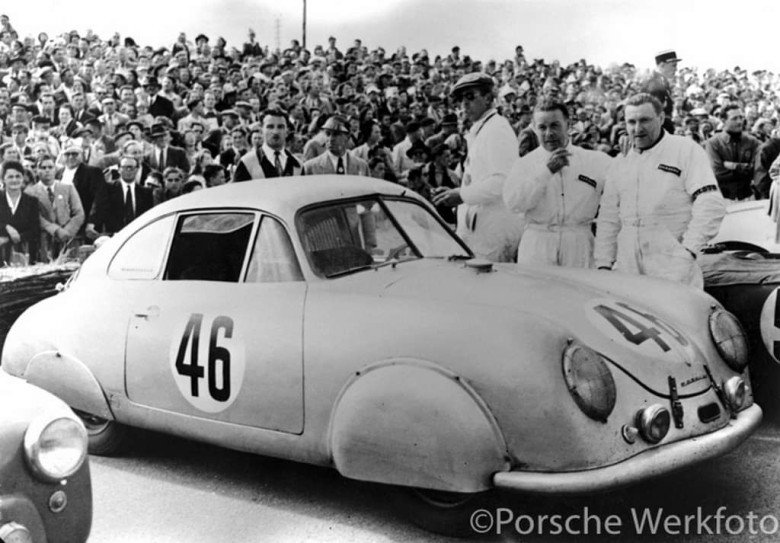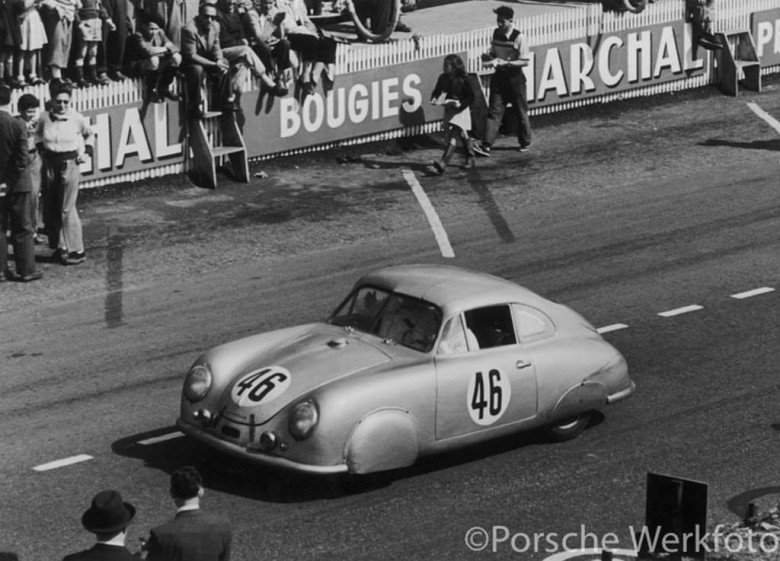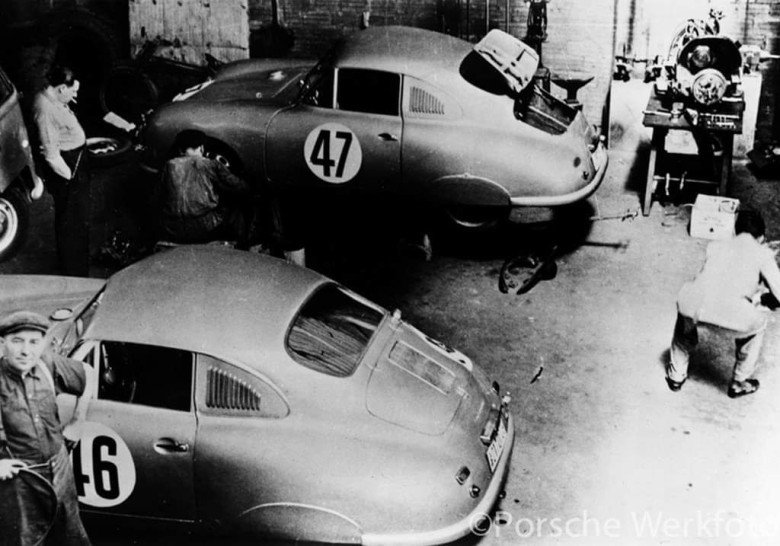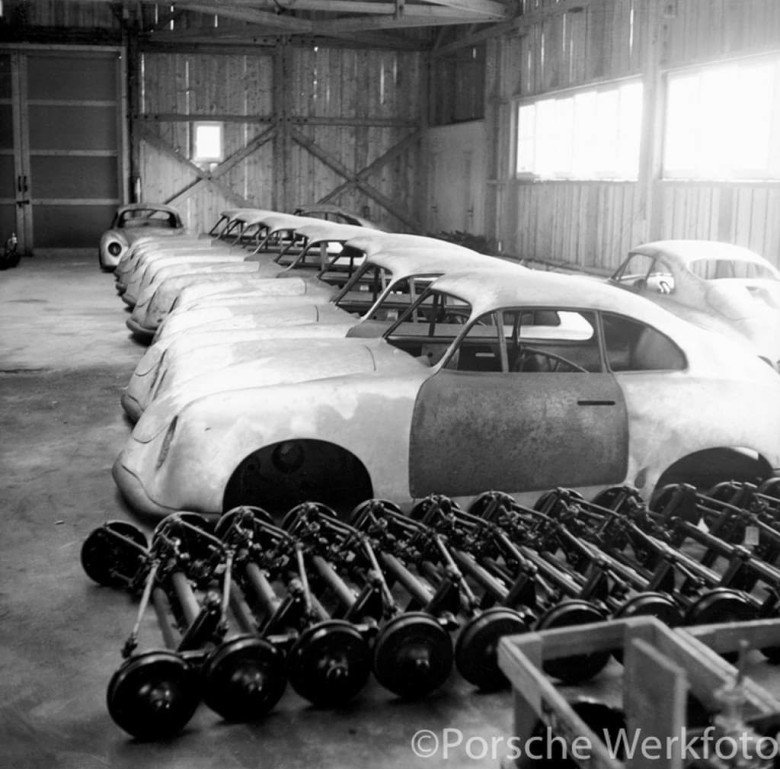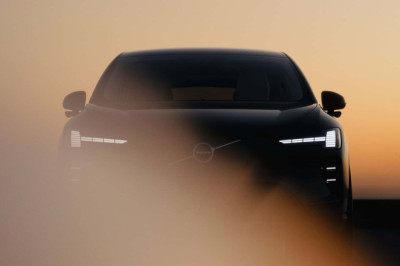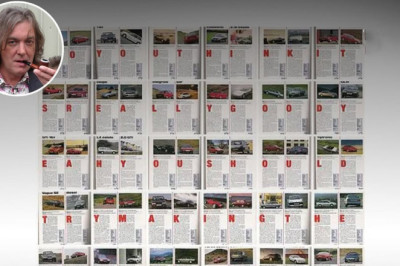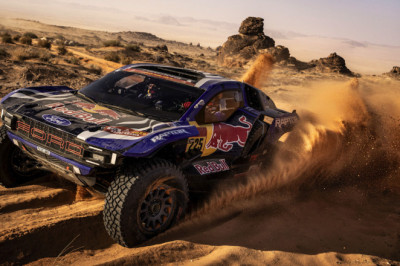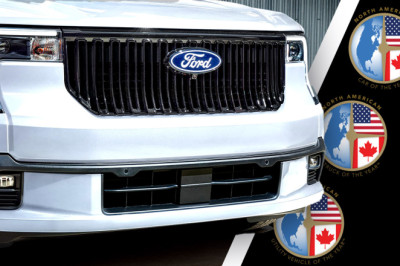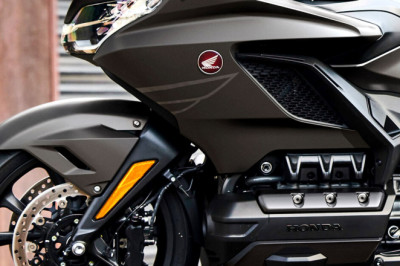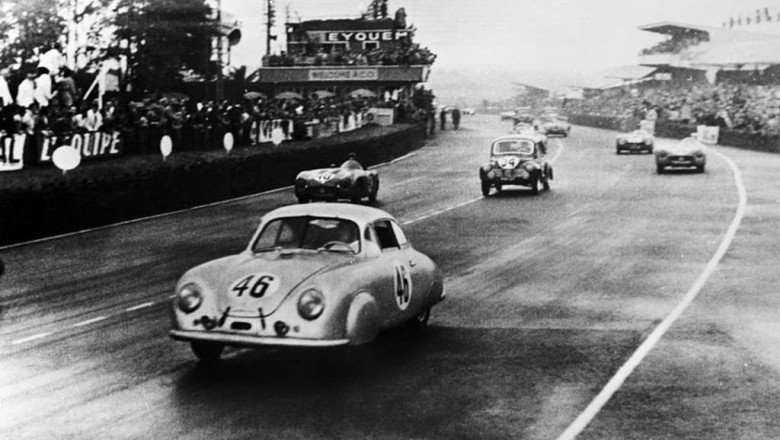
This was Porsche's first-ever race at Le Mans and the company's inaugural foray into motorsports. But how did Porsche come to enter the race?
Ferdinand Porsche and his son Ferry founded Porsche Büro in Stuttgart in 1931 and designed several cars, including a prototype sport vehicle called the Type 64, which was suspended during World War II. After the war, Porsche moved its activities to a sawmill in Gmünd, Carinthia, Austria, to escape Allied bombings. From 1948 to 1949, Porsche produced 53 356 cars with aluminum bodies and sheet steel frames under the name "Gmünd." The company then contracted coachbuilder Reutter to build 500 aluminum bodies, five of which were kept for Porsche's own motorsport ambitions after the company moved back to Stuttgart.
At the Geneva Motor Show in 1950, Ferdinand and Ferry Porsche met Charles Faroux, the organizer of the 24 Hours of Le Mans, and agreed to enter two cars for the 1951 edition. Porsche decided to use the 356 "Gmünd" with an aluminum body due to its weight and aerodynamic advantages, designating the cars 356 SL, with SL meaning Super Leicht (Super Light). Each racing car weighed only 640 kg.
For its first participation in Le Mans, Porsche prepared four cars for testing and entry. However, only one car, chassis 356/2-063, bearing #46 and registration AW21-0729, was ready to take the start after three accidents during testing and track reconnaissance. French Porsche importer Auguste Veuillet convinced French driver Edmond Mouche to team up with him for the race.
Despite heavy rain and serious crashes, the #46 Porsche performed perfectly during the race. Passages to the pits broke time records during refueling, an experience acquired by Veuillet on the Delage in 1949. On lap 158, the #46 Porsche set its fastest race time of 5:44.7 at an average of 139.750 km/h. After passing the checkered flag, Veuillet/Mouche took victory in its 751/1100 cc class, finishing 20th overall. With 2840.65 km covered, this first victory for Porsche helped make the young manufacturer better known, especially the 356.
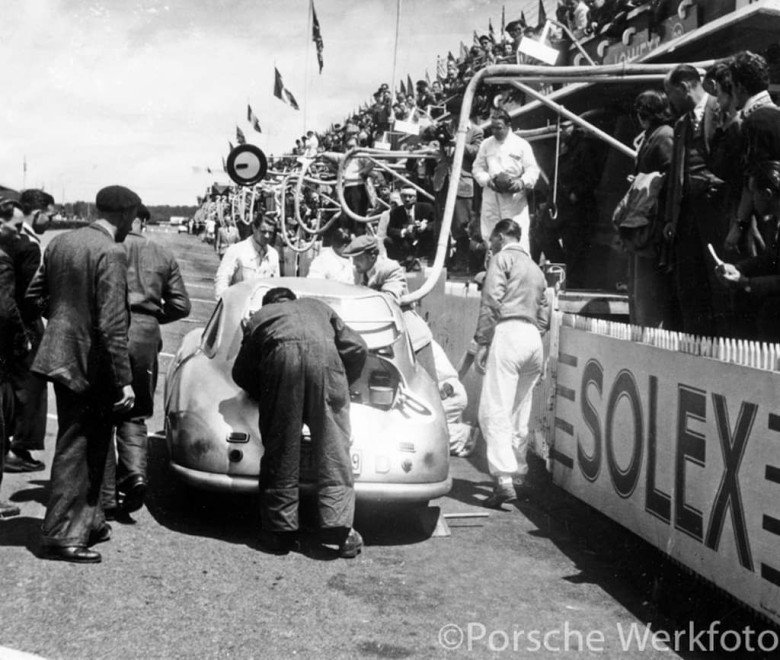
The 19th edition of the legendary 24 Hours of Le Mans endurance race took place, an event known for its grueling challenges and fierce competition. Despite facing heavy rain and encountering serious crashes, the #46 Porsche emerged as a shining star during this historic race.
The #46 Porsche, driven by the skilled duo of Veuillet and Mouche, showcased exceptional performance throughout the race. Despite the treacherous conditions, the Porsche demonstrated its reliability and prowess on the track. The team's extensive experience, gained from Veuillet's previous participation on the Delage in 1949, played a crucial role in their success.
The #46 Porsche set new time records during pit stops, efficiently refueling the car and minimizing the time spent off the track. This strategy, honed by Veuillet's prior experience, allowed them to optimize their time on the circuit and maintain a competitive edge.
During the race, on lap 158, the #46 Porsche achieved its fastest race time of 5 minutes and 44.7 seconds, averaging an impressive speed of 139.750 km/h. This remarkable performance showcased the power and agility of the Porsche on the demanding Le Mans circuit.
Ultimately, after a grueling 24 hours of intense competition, the #46 Porsche crossed the finish line, triumphantly claiming victory in its 751/1100 cc class and securing an impressive 20th position overall. The achievement was a significant milestone for Porsche, as it marked their first victory at Le Mans and helped to establish the young manufacturer's reputation in the racing world.
With a total distance covered of 2840.65 kilometers, the triumph of the #46 Porsche not only solidified their place in motorsport history but also significantly enhanced the brand's recognition. The victory showcased the capabilities of the Porsche 356 and brought attention to the manufacturer's commitment to performance, innovation, and endurance.
The success at Le Mans propelled Porsche into the spotlight, capturing the imagination of racing enthusiasts and establishing the brand as a force to be reckoned with in the world of motorsport. The victory became a cornerstone of Porsche's racing heritage, laying the foundation for their future achievements on and off the track.
Today, the triumph of the #46 Porsche at the 1951 24 Hours of Le Mans remains an iconic moment in the history of both the race and the Porsche brand. It stands as a testament to the team's skill, determination, and the enduring legacy of the Porsche 356, a car that would continue to shape the automotive industry and inspire generations of drivers and enthusiasts.
